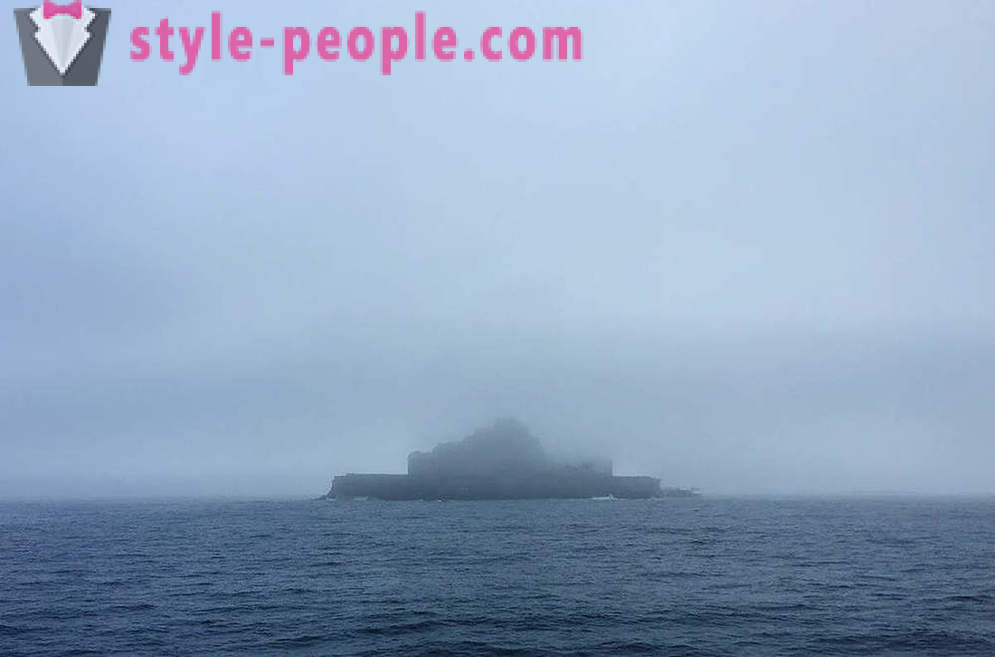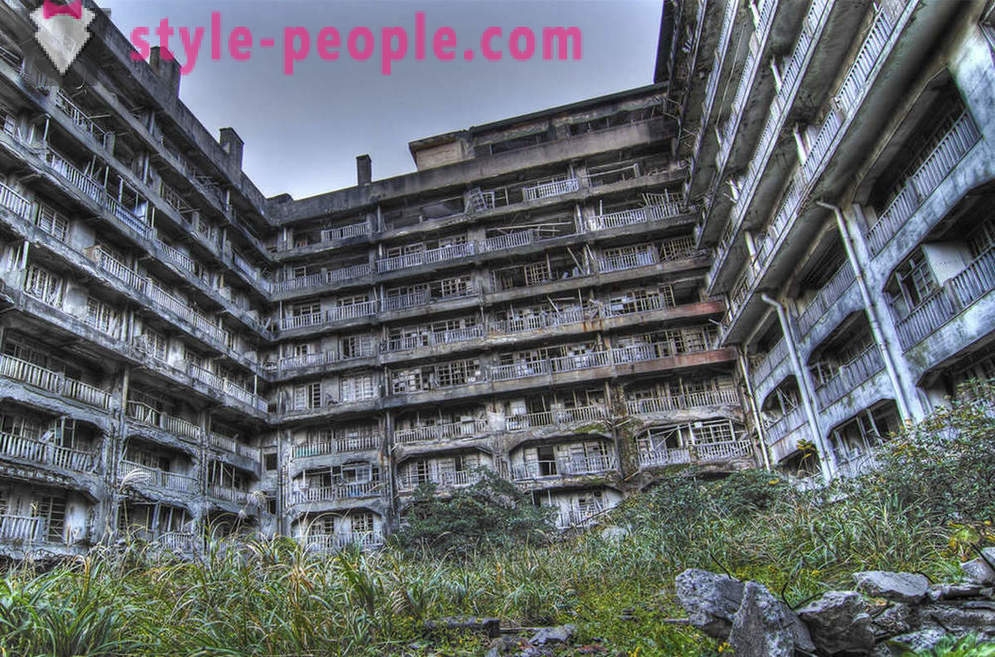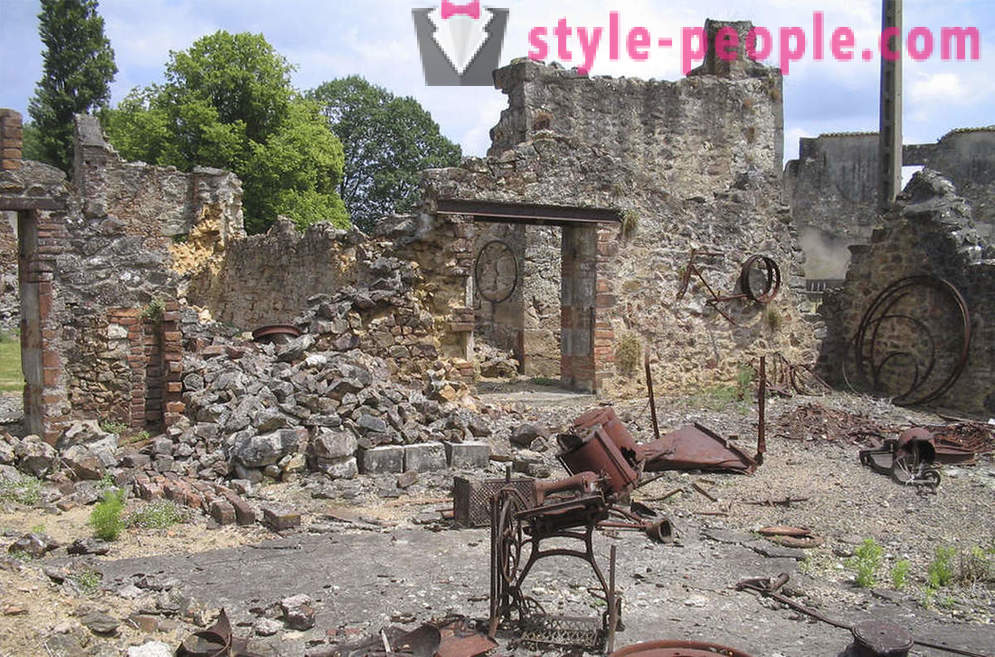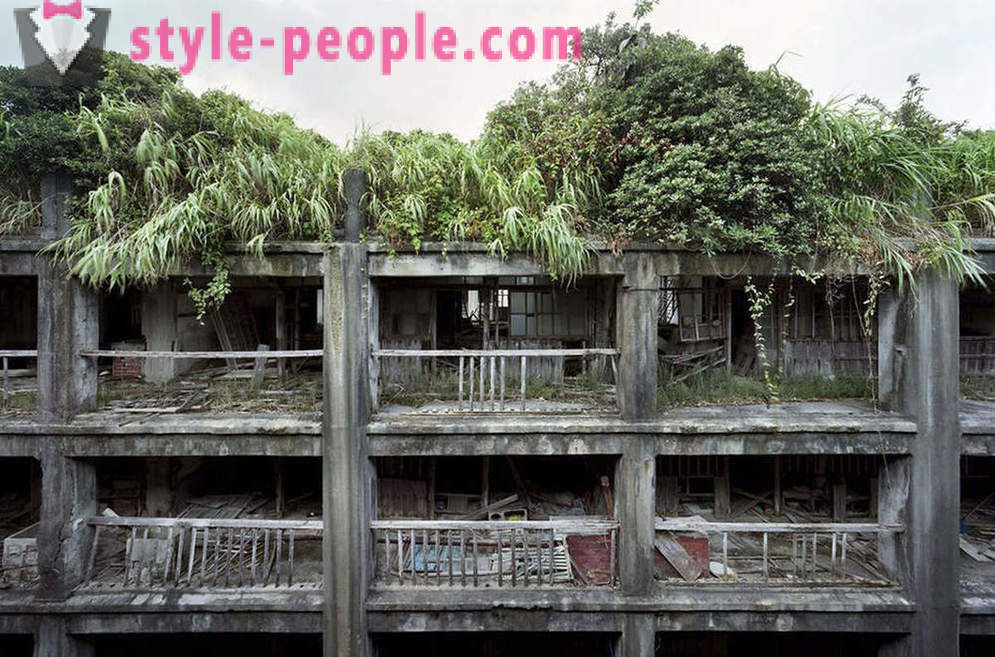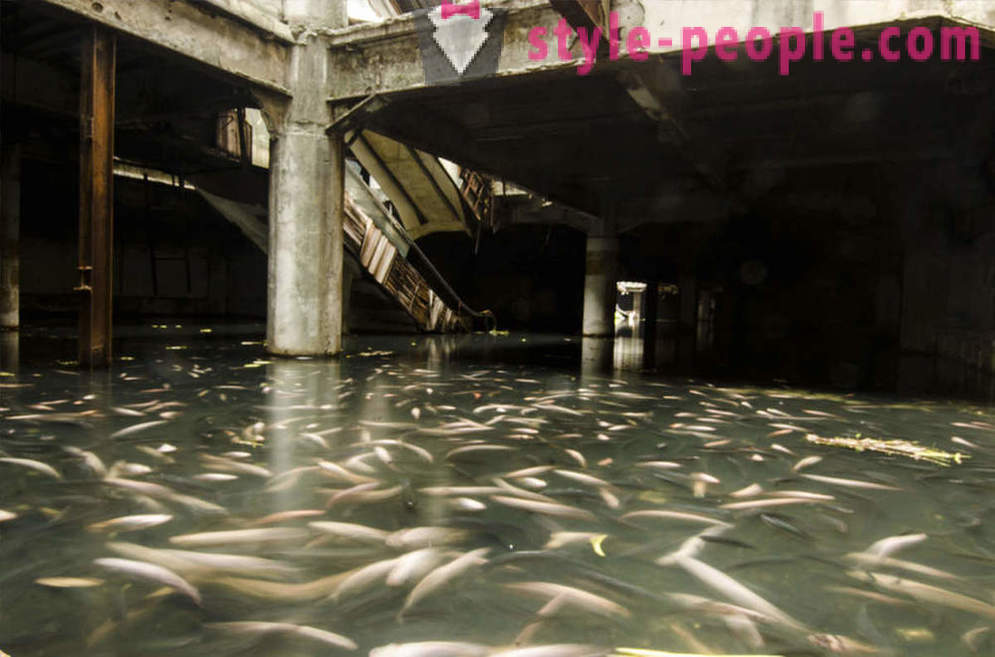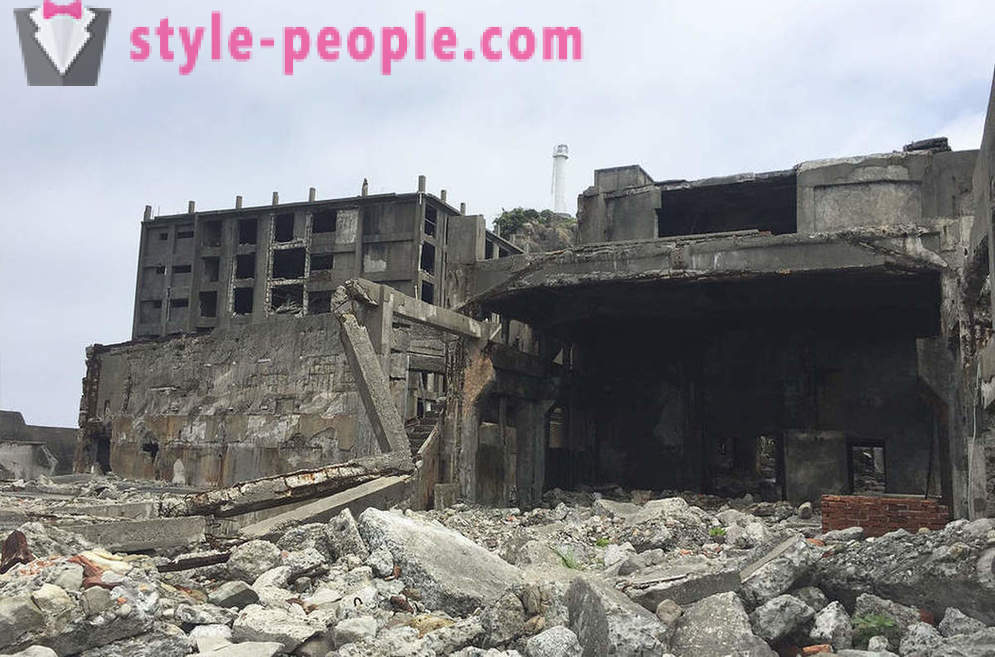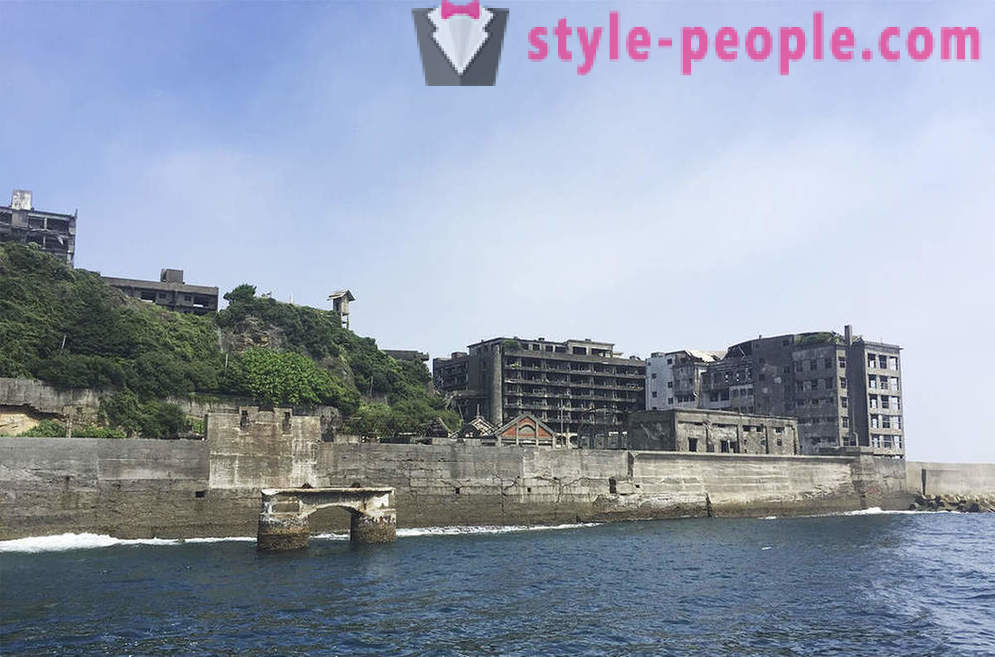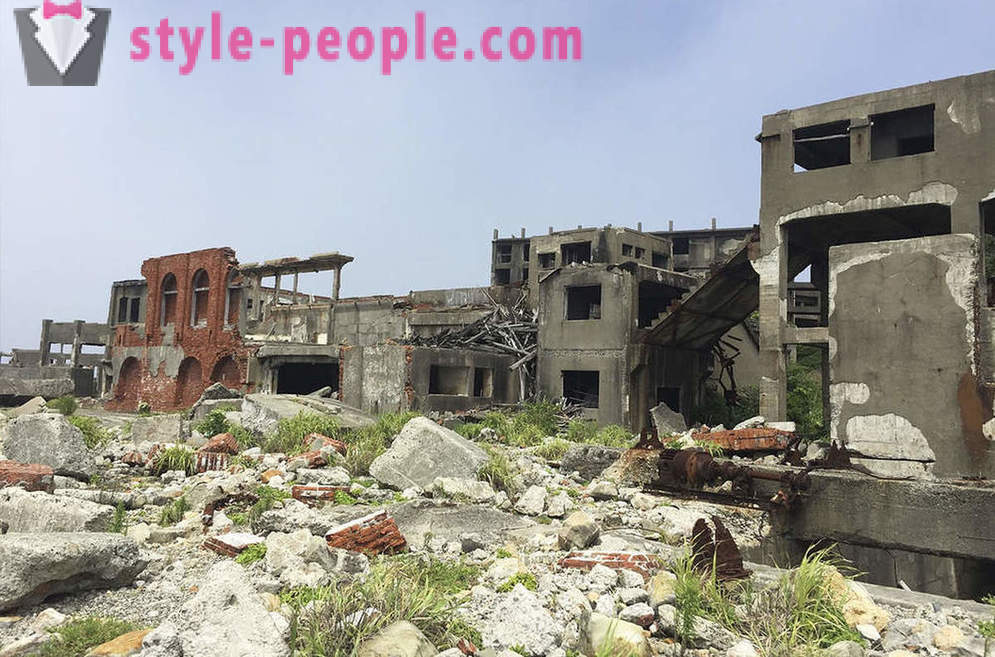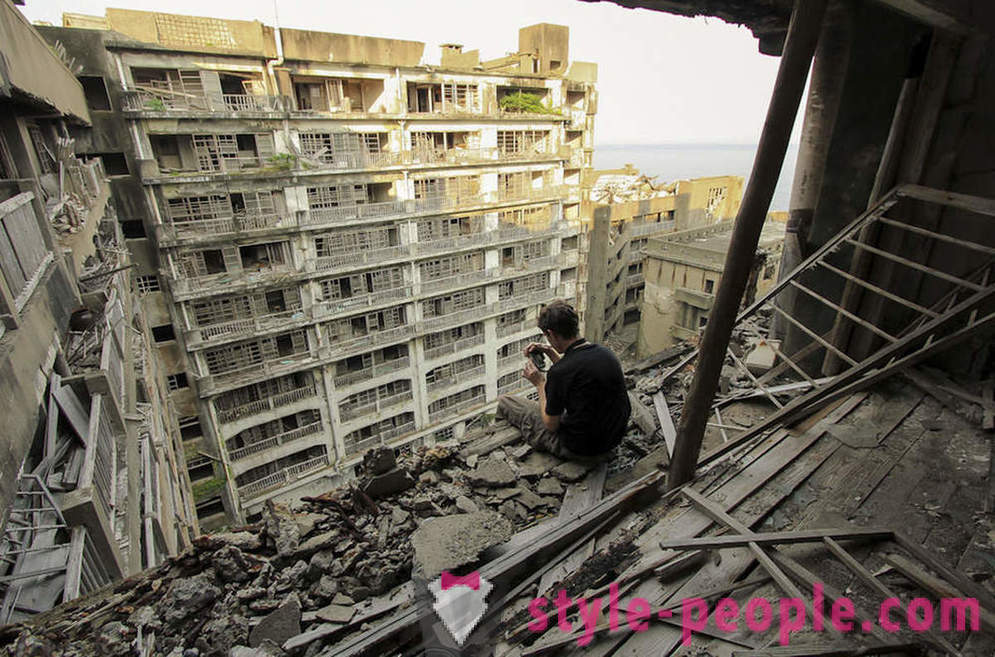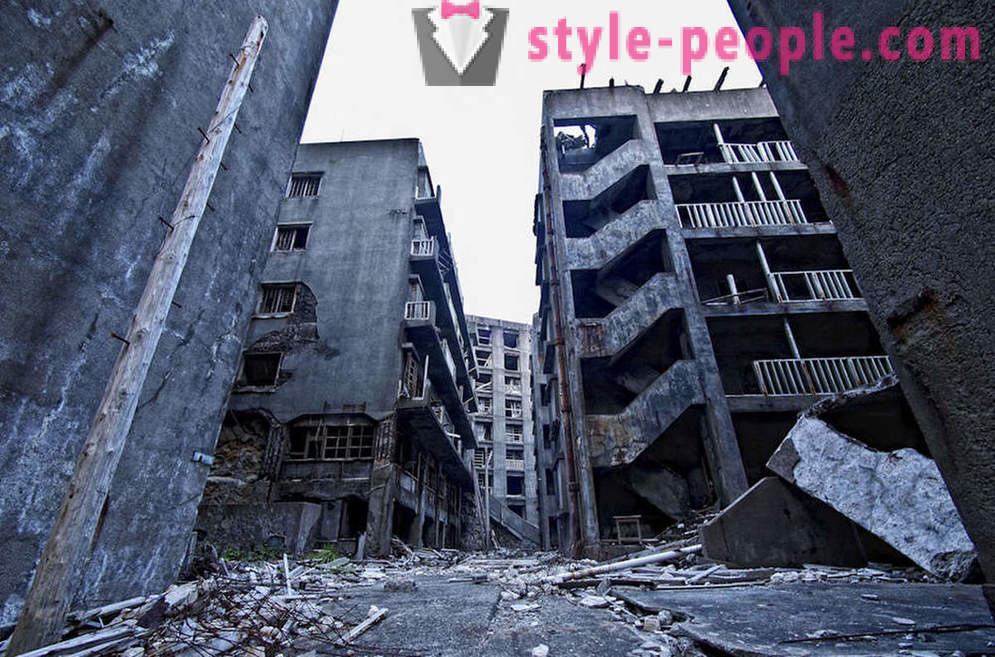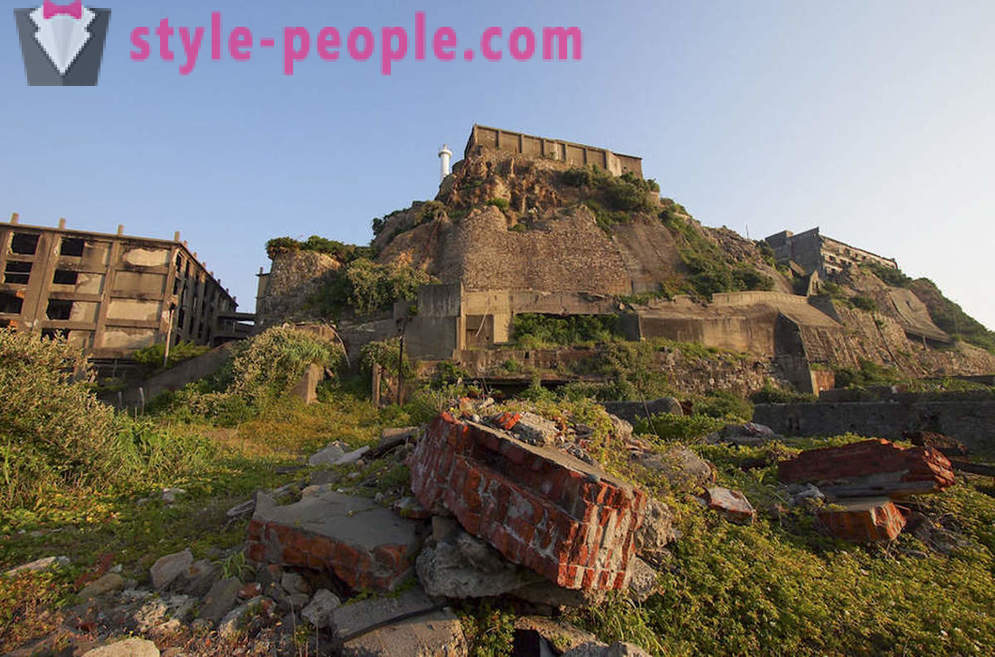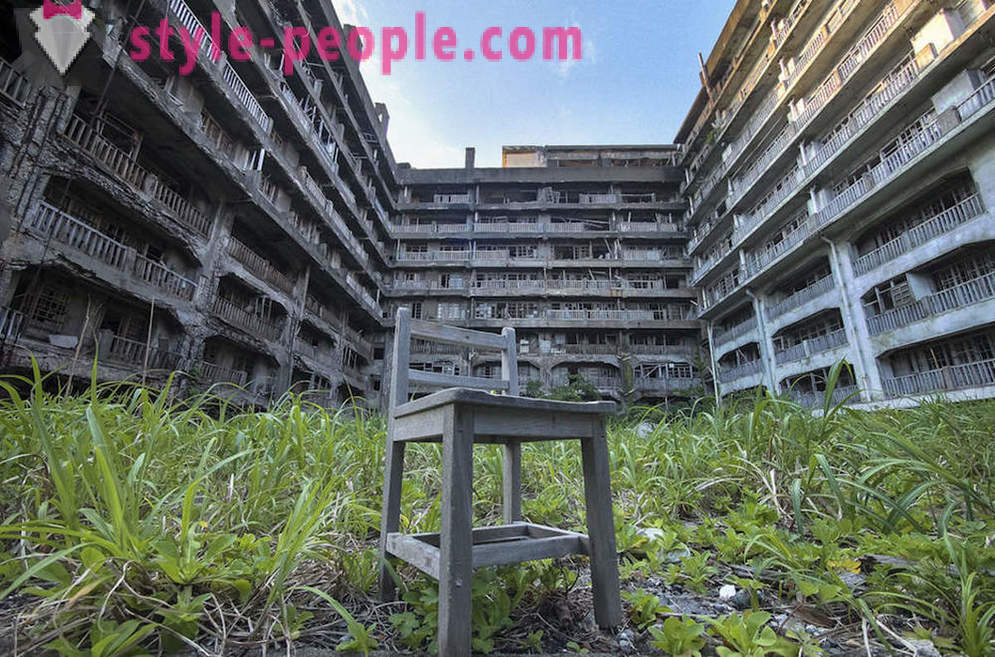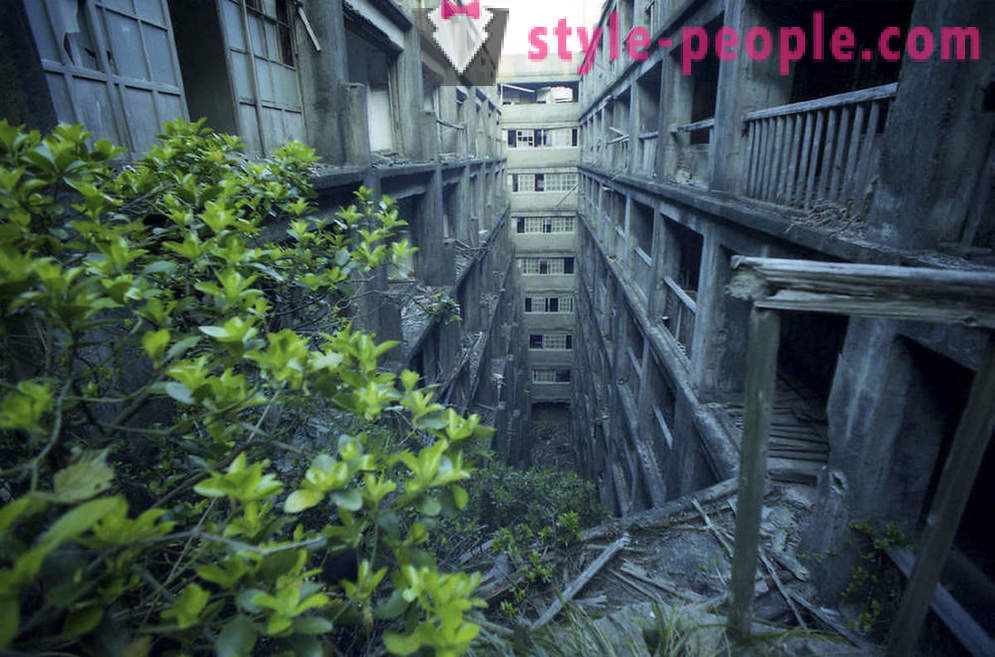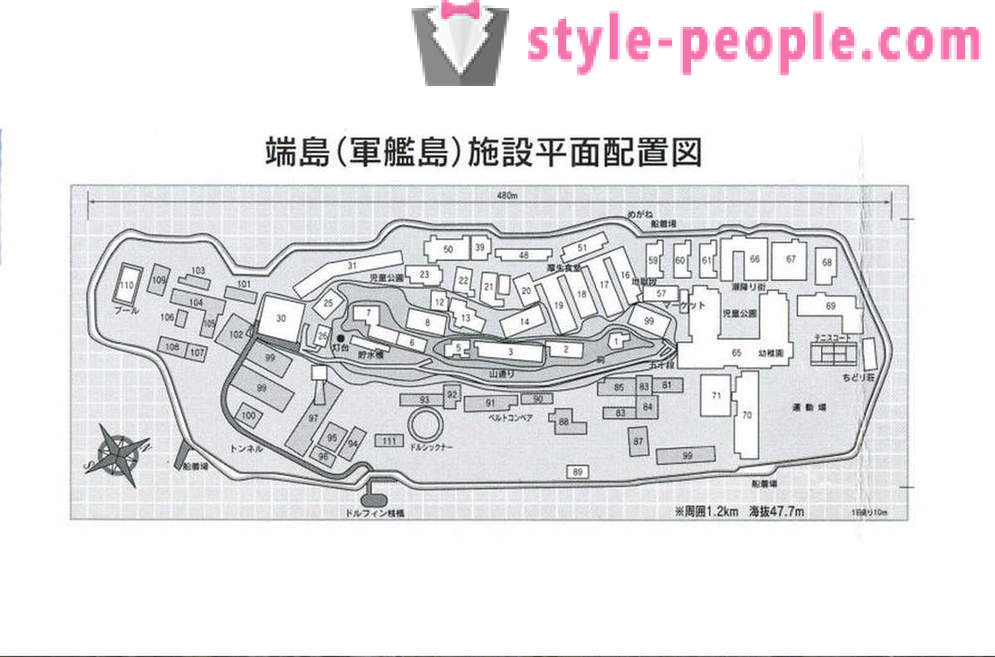The island, which can not be
• Island, where you can not
Gunkandzima - the nickname of the Japanese island of Hasim - literally means "cruiser", as they call it for its resemblance to a warship. In 1810, there opened deposits of coal, mining companies have built. In 30-ies of XX century there were munitions factories. On a fragment of rock a mile in length about life in full swing: were built multi-storey residential buildings, hospitals, schools and other infrastructure. Mines went into the ground at 500-600 m For 50 years, the island was one of the most densely populated places on earth -. 5259 people per 1 square km (population density in the habitable zone reached a crazy number of 139 100 people per 1 km²).
But in 1974 came from coal oil, mines closed, people left the island. Abandoned buildings are being slowly eroded.
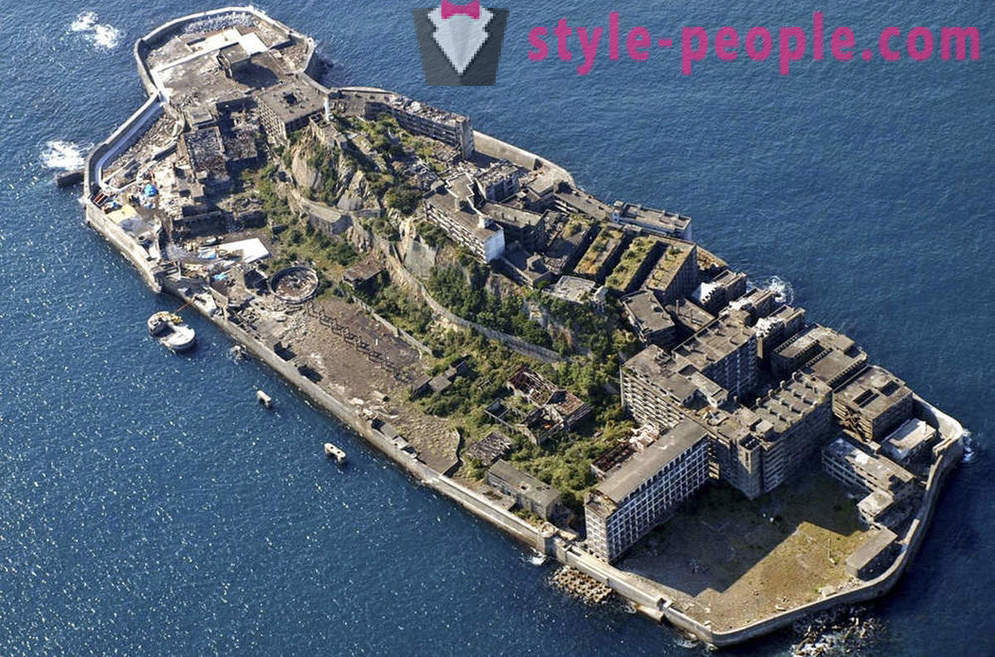
oseschenie island was prohibited (officially - to protect him from "black diggers") - at least until 2009, when the first tourist boats were able to swim to its shores. However, participants of the tours is forbidden to climb deep into the island, and in fact there is all the fun for fans of the ruins and rubble: Crossroads salty rain (here, which does not reach the sea waves, people could ride out the storm and typhoons), Stairway to Hell (it leads to Senpukudzhi temple, taking the stairs will exhaust you to quite severe pain in the legs) or Block 65 -devyatietazhnoe residential building at 317 apartments (with terrifying the population density of the area of apartments was just 10 m2). Photographer Michael Gakuran able to get deep into the island and made a series of spectacular images. Here's what he wrote about his impressions: "Block 65 - a huge concrete monstrosity inside - rotten mat and broken door, the forgotten child matryoshka, tortured dummy rusted medical equipment ... Between walls sprout trees - nature slowly but surely takes its".
It remains to add that in 2015, Hasim island was included in the UNESCO World Heritage List as "an object of the industrial revolution of the Meiji period: metallurgy, shipbuilding and coal mining."
